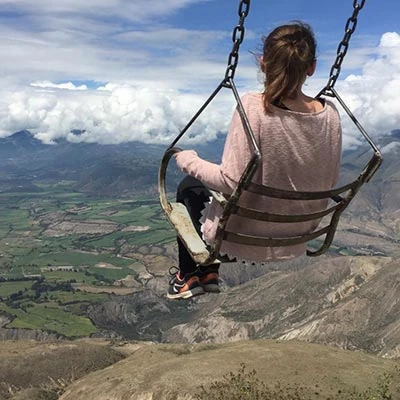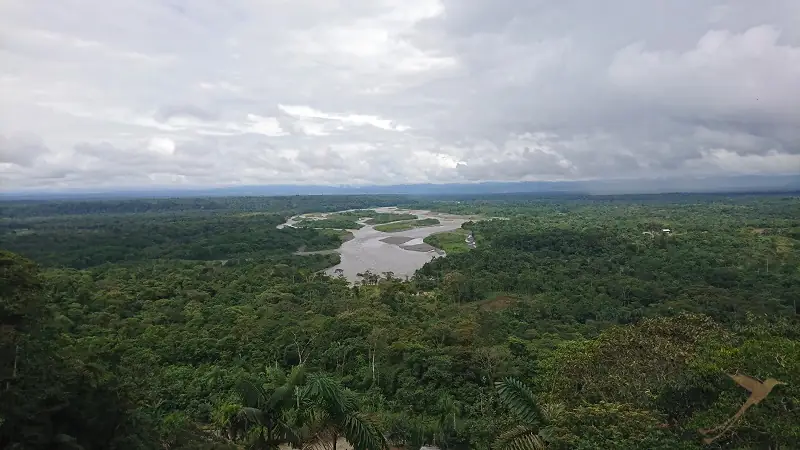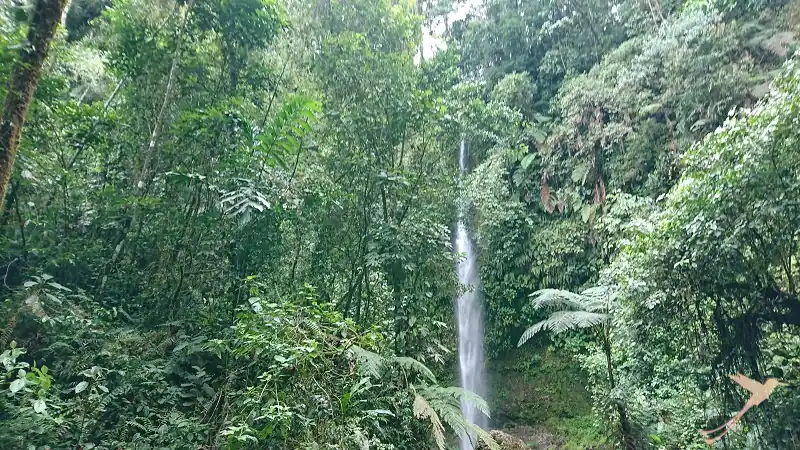
The best way to get to know a country is to be shown and explained by locals. I have a friend in Puyo and after the long time when all of Ecuador was at a standstill because of the coronavirus, I decided to visit her there. She is not only a real organizational talent, but also passionate when it comes to showing me her home country.
The journey to Puyo
Puyo is the capital of the province of Pastaza in the Ecuadorian Amazon region. Already the journey from Quito to Puyo is a real experience! Because first you follow the breathtaking avenue of volcanoes to Ambato, where you can even see Ecuador’s second highest volcano, the Cotopaxi, on a clear day. From Ambato, you then head east, past the Tungurahua volcano to Puyo. On this second part of the route you will first pass the cities of Pelileo and Patate. In a separate blog article you can read more about the journey up to here and about Patate itself. The tour continues through the city of Baños de Agua Santa, which is popular with tourists. Because of the numerous activities that are offered here in the picturesque location in the mountains, it is considered the “adventure capital” of Ecuador.
The last hour of the trip is on one of the most scenic routes in the country: Between Baños and Puyo the road winds constantly along the mountainside. There are wonderful views of the canyon, while you can watch the fascinating change of vegetation between the Andes and the rainforest. An alternative route is via Tena, known as the “Gateway to the Rainforest”. This route is also very scenic, but takes a little longer.
Accommodations in Puyo
I could spend the weekend at home with the very hospitable family of my friend. But I was also recommended the Hotel Oro Negro . A particularly recommendable and natural experience is also the accommodation in one of the cabañas of “Muyu – Semilla de Selva”, which was just finished (2020) and is about 20 minutes away from Puyo.
Puyo - what you can do
The Mirador de Indichuris
On the very day of our arrival we set off for an absolutely magical place, the Mirador de Indichuris. From the viewpoint you can enjoy breathtaking views of the rainforest and the confluence of the Pastaza and Puyo rivers. Here you have the possibility to swing with a huge swing over this fascinating scenery or to relax in one of the hammocks and simply enjoy the view and especially the sunset.

The entrance fee is only $3, which is really worth it! My colleague Angela visited this one before me and put together everything worth knowing in a separate blog about the Mirador and the Comunidad de Indichuris. And I can only share her enthusiasm about this place.
Naturaleza Viva
On the way (or way back) from the Mirador de Indichuris you will pass a private reserva called Naturaleza Viva. Here you can make beautiful and not too long walks, either to another viewpoint or to a waterfall. We decided for the latter to the waterfall. Due to the still valid curfew we unfortunately did not have time for the viewpoint afterwards, but it is certainly worth a walk.

Las Cavernas del Río Anzu (The caves of the river Anzu)
About 20 minutes drive from Puyo in the direction of Baños you will reach the small town of Mera. You may have already passed through it during your journey. From here a gravel road leads through a beautiful landscape to a hut. From here a beautiful hiking trail through the unique nature of the rainforest starts to the Cavernas of the Río Anzu. For the trail you should definitely wear rubber boots (available in the center of Puyo for only 8$). Because on the way it is not uncommon to find yourself standing more than ankle-deep in mud. And here your normal hiking boots would get stuck in doubt.
If you also want to enter the caves – which I highly recommend – you should also avoid expensive clothes. When you arrive at the entrance of the first cave you should have a flashlight handy. Headlamps are best. Because in the caves you can only crawl around and will need your hands free. Inside you will see large stalagmites and stalactites as well as bats hanging from the ceilings. You should also prepare yourself mentally for big spiders.
It is not easy to enter the caves. Often you have to climb, pull yourself up, retract your head or crawl under the low cave ceiling. Due to the muddy excrements of the bats they are also slippery in many places. Therefore it is only recommended to enter the caves if you are agile and in good physical condition.
From here we continue down to a river where you can swim surrounded by beautiful nature. But be prepared for a stronger current, especially after rainfall. From here you either go back the same way. Or you can cross the river and follow the adjacent path back to the road and the hut.
Muyu – Semilla de Selva
Only about 20 minutes drive from Puyo you will reach the Finca Muyu – Semilla de Selva. It is also a sustainable project that works against the deforestation of the rainforest and the illegal trade with indigenous animal species as well as for the preservation of indigenous communities. There are two new cabañas on the property, a camping area and hiking trails to a waterfall and a viewpoint.
The complex is very well maintained and beautifully planted. It is also perfect for observing hummingbirds in the garden and other bird species in the adjacent forest. The owners are in very close contact with local indigenous communities. Their inhabitants are also involved in the activities of the facility for tourist purposes. They can tell you a lot about their way of life and traditions as well as about the local flora and fauna. You can also learn traditional crafts from them.
Even though Puyo may be in the shadow of the Baños, which is heavily frequented by tourists, the area has great potential for hiking and staying away from the tourist streams in the nature of Ecuador’s rainforest region. In addition to the above mentioned activities in the immediate vicinity, you can also use Puyo as a starting point for excursions to Tena and Misahuallí and for a subsequent exploration of the lower Río Napo.







